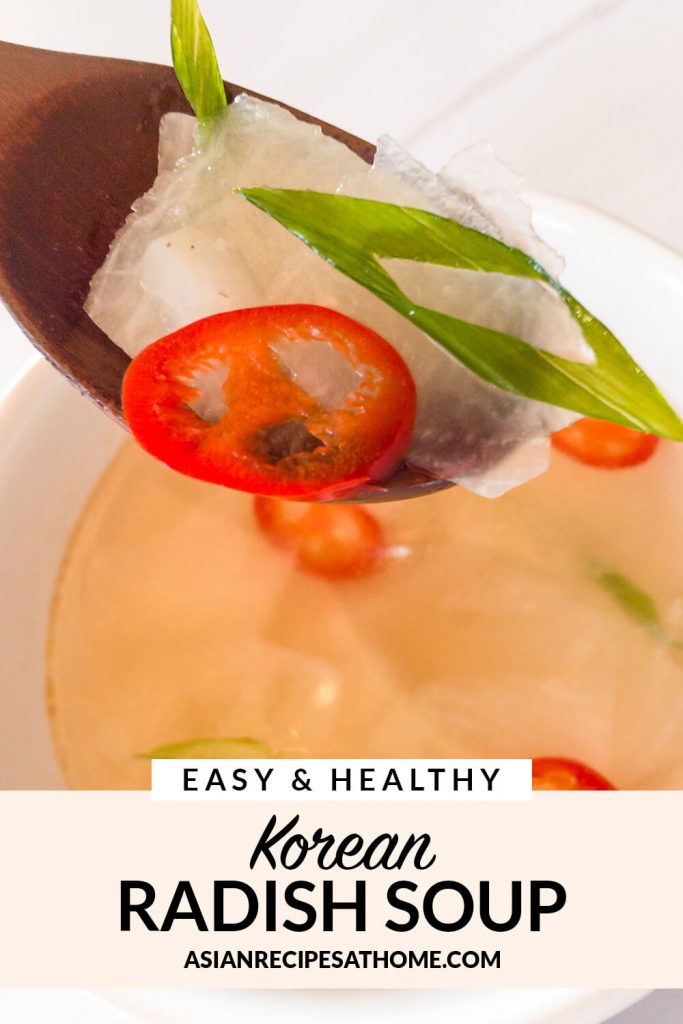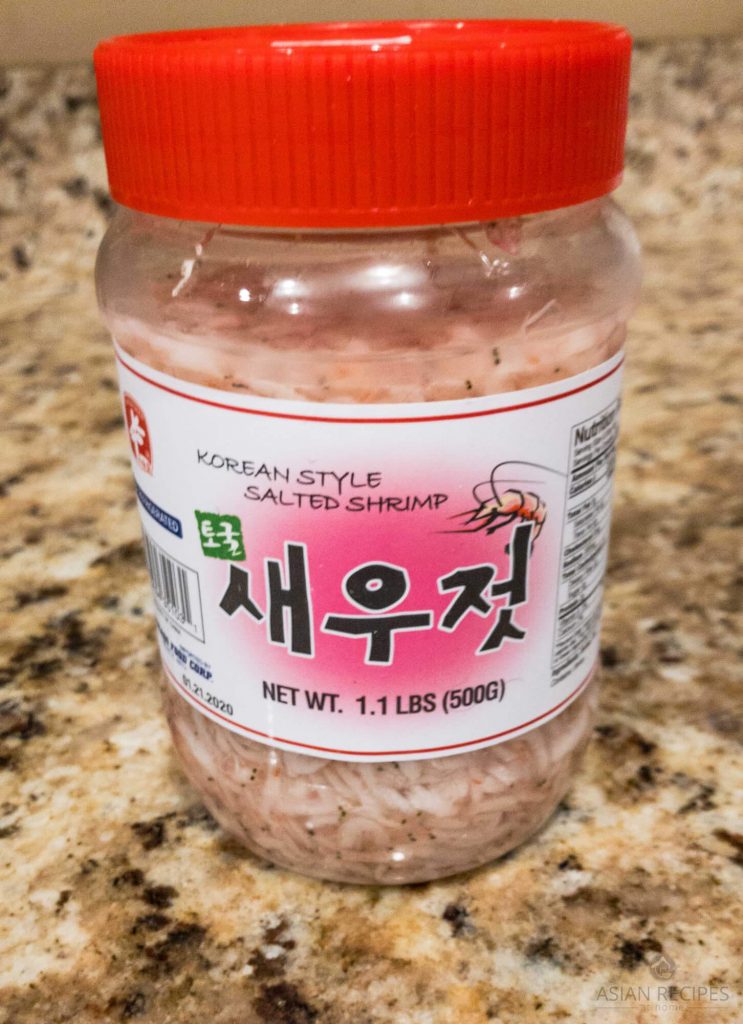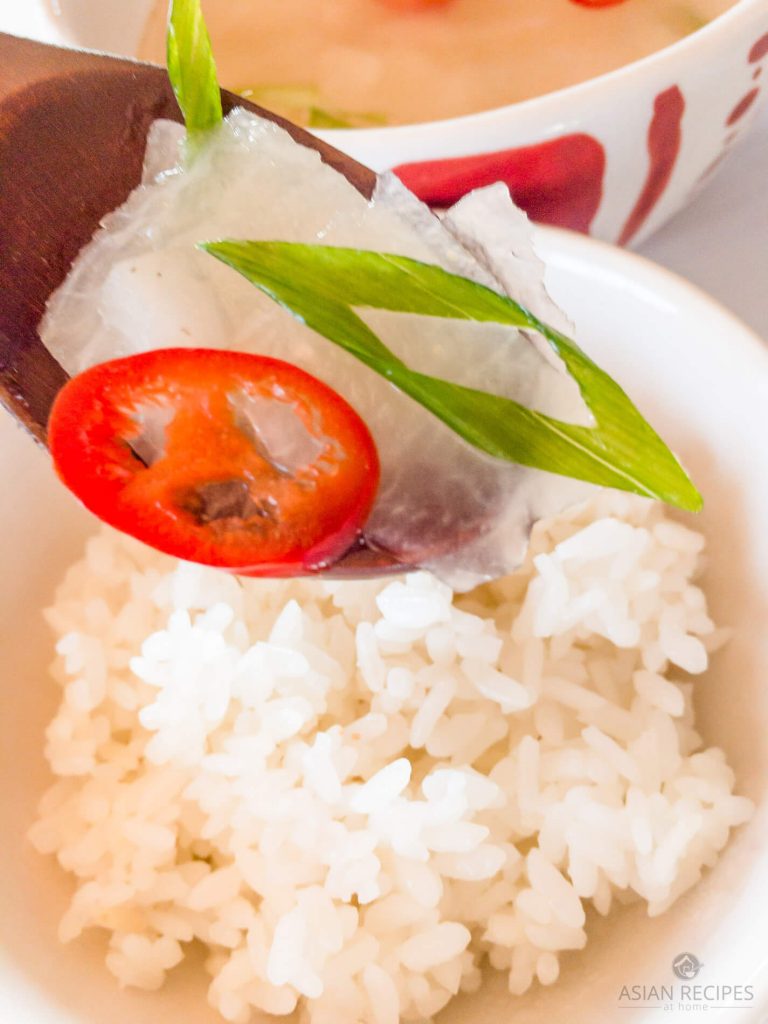This Korean radish soup (Muguk) recipe is incredibly easy to make and beef-free. It has a mild-savory flavor and is easy to digest. A perfect soup option to make during cool weather, for kids and the elderly.
Our Korean radish soup recipe
This soup isn’t necessarily something you’ll get at a restaurant, but it’s a common and classic soup in Korean households. The recipe we are sharing with you in this post is made without beef. Most radish soup recipes you’ll find include beef, however, we decided to share a version without it to make it even easier to make and extra gentle on your digestive system.
Ingredients needed for this Muguk recipe
- Korean radish (mu, 무)
- Green onions
- Sesame oil
- Avocado oil
- Salt
- Seasoning sauce
- Garlic
- Fish sauce
- Fermented shrimp*
- Water
*We typically use a Korean-style fermented shrimp like what is pictured below. However, we found a fermented shrimp paste online if you can’t find Korean-style fermented shrimp at your local Asian/Korean grocery stores. OR you can also substitute it out with additional fish sauce (see the recipe card notes).
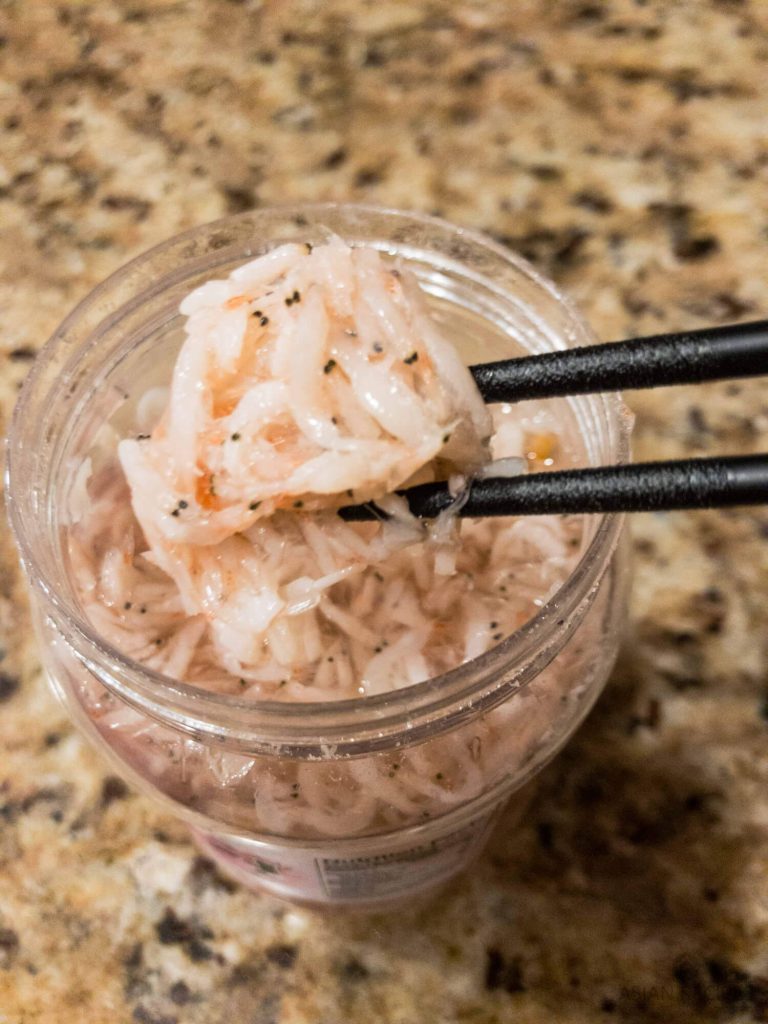
What is Korean radish (mu, 무)?
Korean radish (mu) is a variation of the Daikon radish (white radish), but it’s shorter, thicker, and heavier, with denser flesh and smoother leaves. The best time to eat Korean radish, mu (무), is in the late fall and winter. They are juicy and have a subtle sweetness to them. When purchasing, choose a radish that is heavy and firm.
Daikon radish vs Korean radish
Korean radishes are milder and sweeter than most other types of radishes, including daikon. Both Korean and daikon radishes are a variety of Asian radishes. They appear to be the same in looks, however, they are not the same thing. The Korean radish variety is rounder and shorter than the Japanese daikon radish variety. Korean radish has a faint green color at the stem end, whereas daikon is completely white.
Where to find Korean radish? Or grow them in your garden!
Look for Korean radishes at your local Asian/Korean grocery stores. You can find them at any time of year since it is a staple ingredient in a lot of Korean cooking, like in the staple kimchi.
If you don’t have access to a local grocery store that carries this radish, then consider trying to grow them yourself in your own garden. Here are some seeds we found online.
How to store fresh, whole Korean radish?
If stored properly, fresh Korean radishes can last up to two months. Keep the radish wrapped in newspaper paper or a paper towel in a cool place. The optimal temperature is approximately 41˚F, or 5˚C. They can also last a long time in the fridge as well.
More recipes using Korean radish
What to serve with this easy soup recipe?
We recommend serving this soup with freshly steamed rice and a variety of side dishes (banchan). Here are a few side dish recipe ideas:
- Whole30 Korean-style Stir-fried Potatoes
- Soy-free Stir-fried Anchovies (Myulchi Bokkeum)
- Quick Cucumber Kimchi (Oi Kimchi)
- Korean Soybean Sprouts Side (Kongnamul Muchim)
- Whole30 Asian-style Stir-fried Eggplant
HUNGRY FOR MORE? Subscribe to our newsletter and follow along on Facebook, Pinterest, Twitter, and Instagram for all of the latest updates.
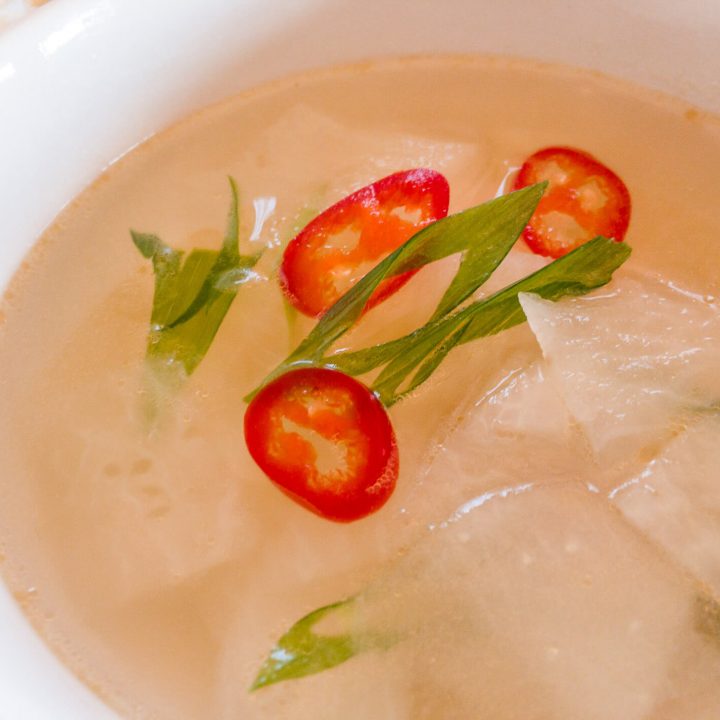
Korean Radish Soup (Muguk)
This Korean radish soup (Muguk) recipe is incredibly easy to make and beef-free. It has a mild-savory flavor and is easy to digest. A perfect soup option to make during cool weather, for kids and the elderly.
Ingredients
- 2 cups radish, paper thin square slices
- 2 green onions, chopped 1” length
- 2 Tablespoons sesame oil
- 1 teaspoon avocado oil
- 2 teaspoons salt
- 1 Tablespoon seasoning sauce
- 1 teaspoon garlic, minced
- 1 teaspoon fish sauce
- 1 teaspoon fermented shrimp*
- 4 cups water
Instructions
- Slice the radish into almost paper-thin-like slices. You want them to be bite-sized, so around 1” to 1.5” by 1” to 1.5” sized pieces.
- Add a soup pot and turn the heat on to medium. Once warm, add the sesame oil, salt, avocado oil, and radish slices to the pot. Stir-fry the radish for 10 minutes.
- Next, add in the 4 cups of water. Turn the heat up to high, add the lid to the pot and leave it cracked. Let it come to a boil. Once it reaches a boil, let it boil for 2-3 minutes.
- Turn the heat down to medium-low. Add in the rest of the ingredients, except the green onion. Put the lid back on and leave it cracked. Let it continue to cook for 15 minutes.
- Turn off the heat. Add in the green onions.
- Serve and enjoy!
Notes
*If you don’t have fermented shrimp, then substitute with an additional teaspoon of fish sauce.
We love seeing your creations from our recipes! Tag us on Instagram at @AsianRecipesAtHome.
Disclaimer: Under no circumstances shall this website and the author(s) be responsible for any loss or damages resulting from the reliance of the given nutritional information or ingredient/product recommendations. Recommended ingredients/products can change their formula at any time without this website and author’s awareness. It is your responsibility (the reader’s) to check the label/ingredients of any product prior to purchasing and/or using. We greatly appreciate your support and understanding.
